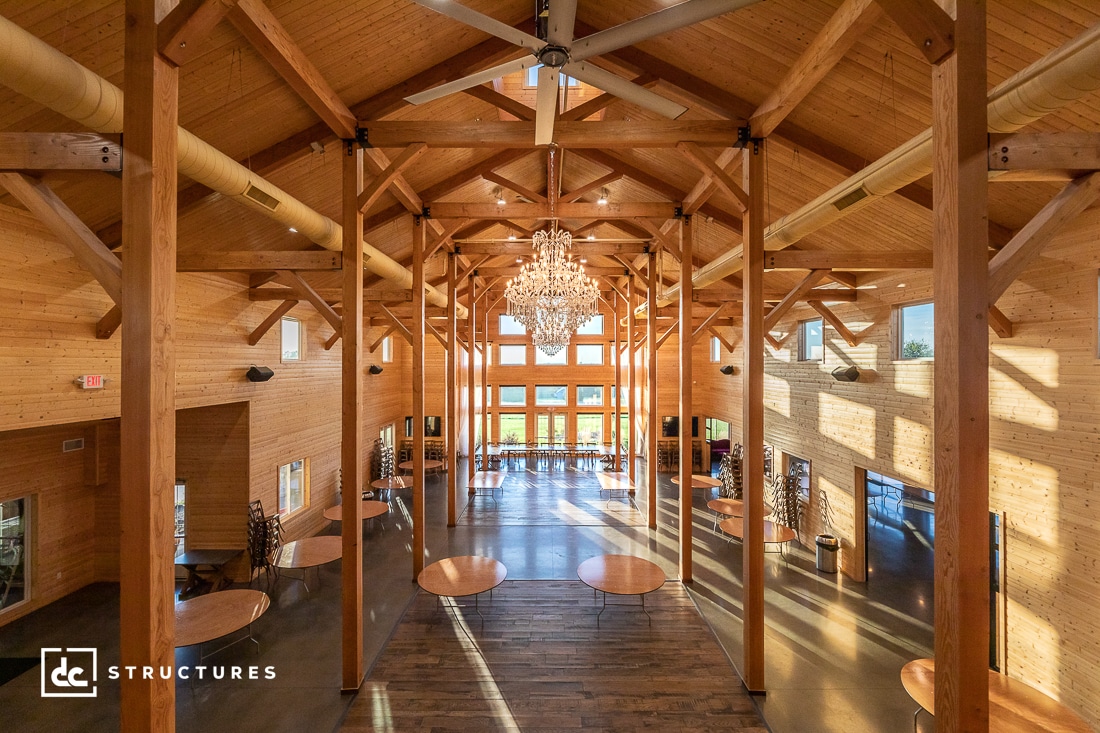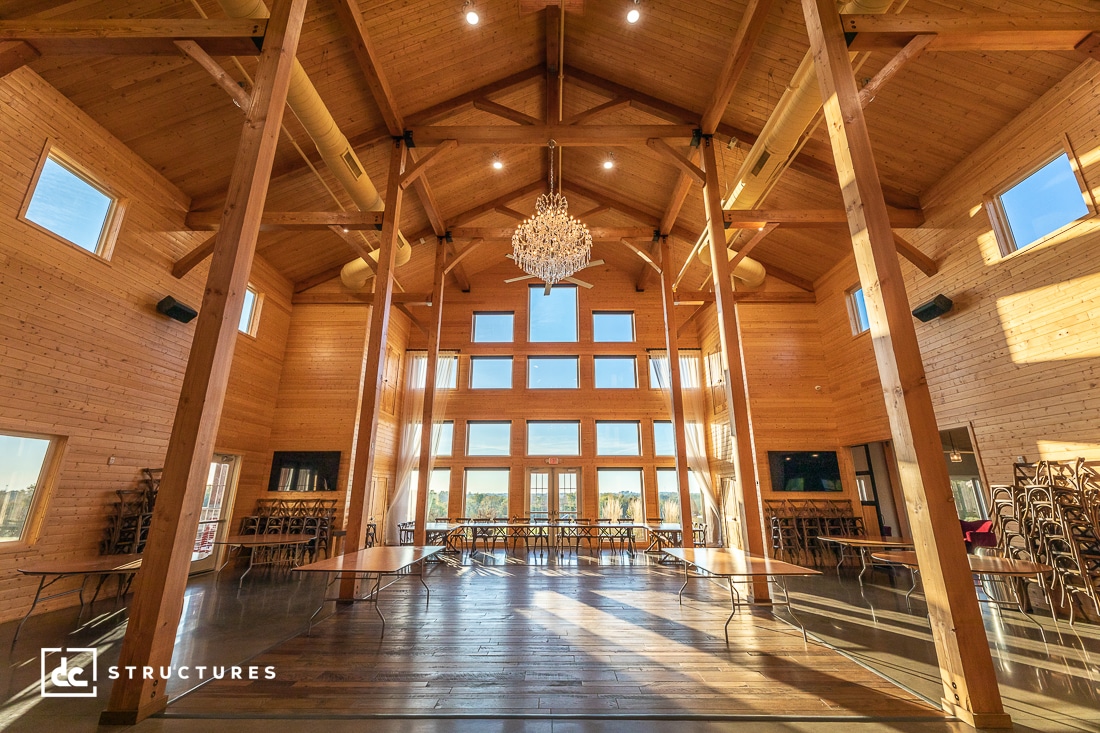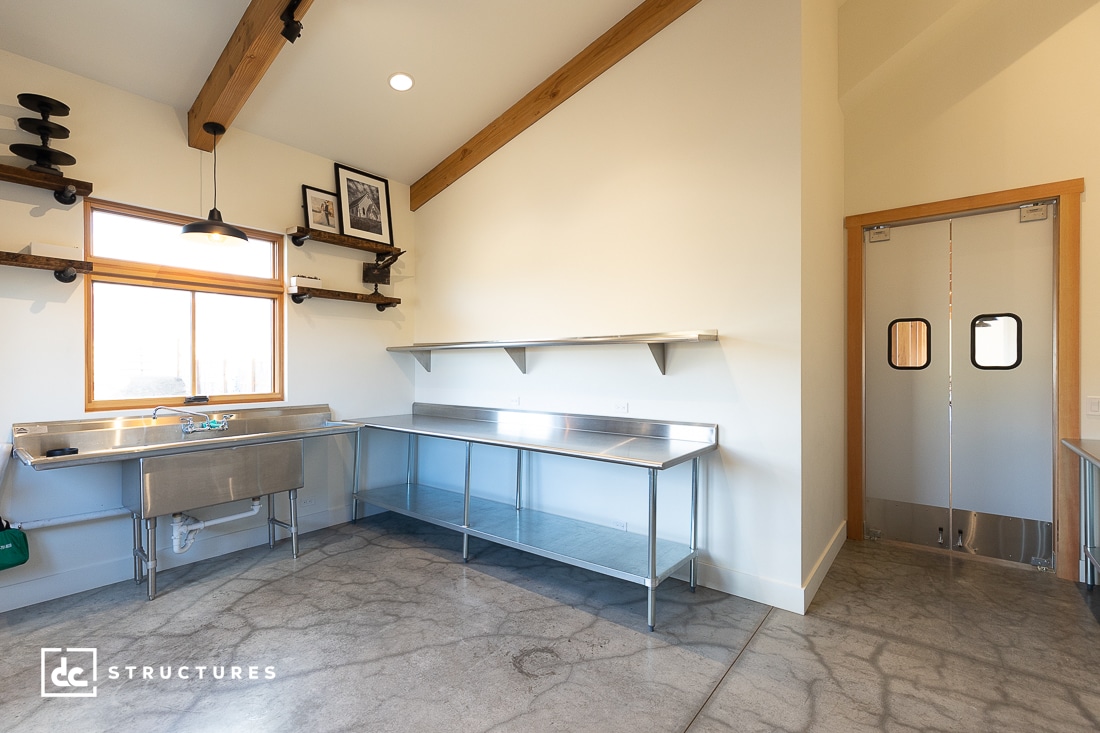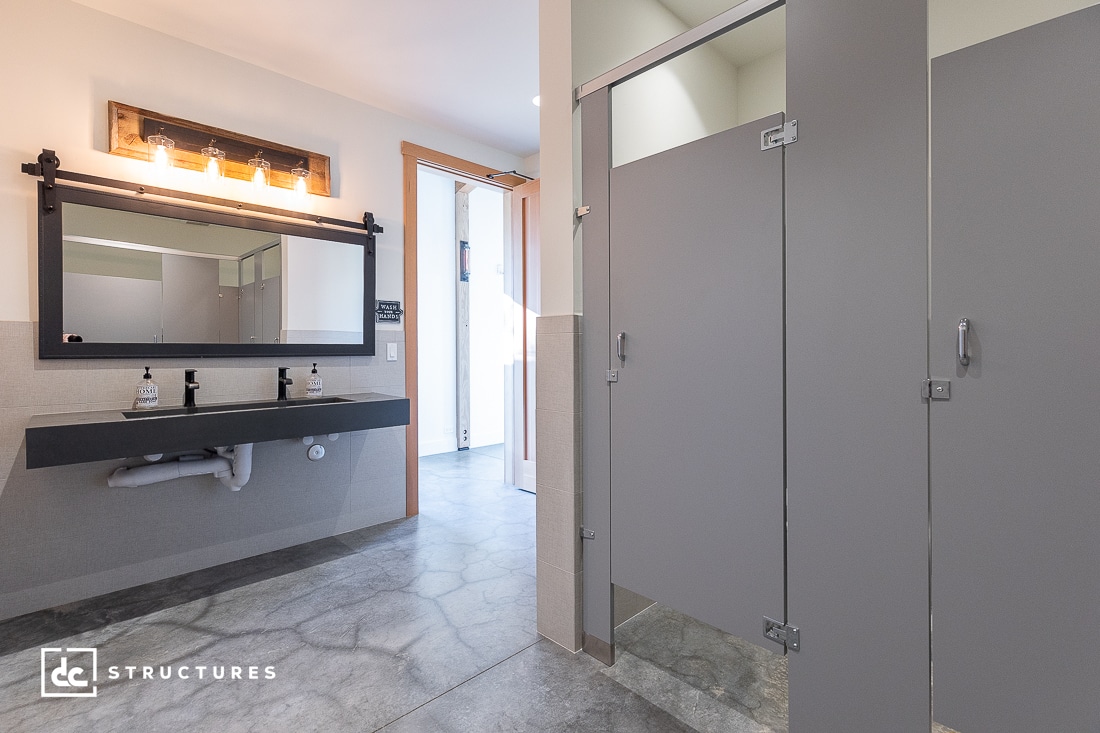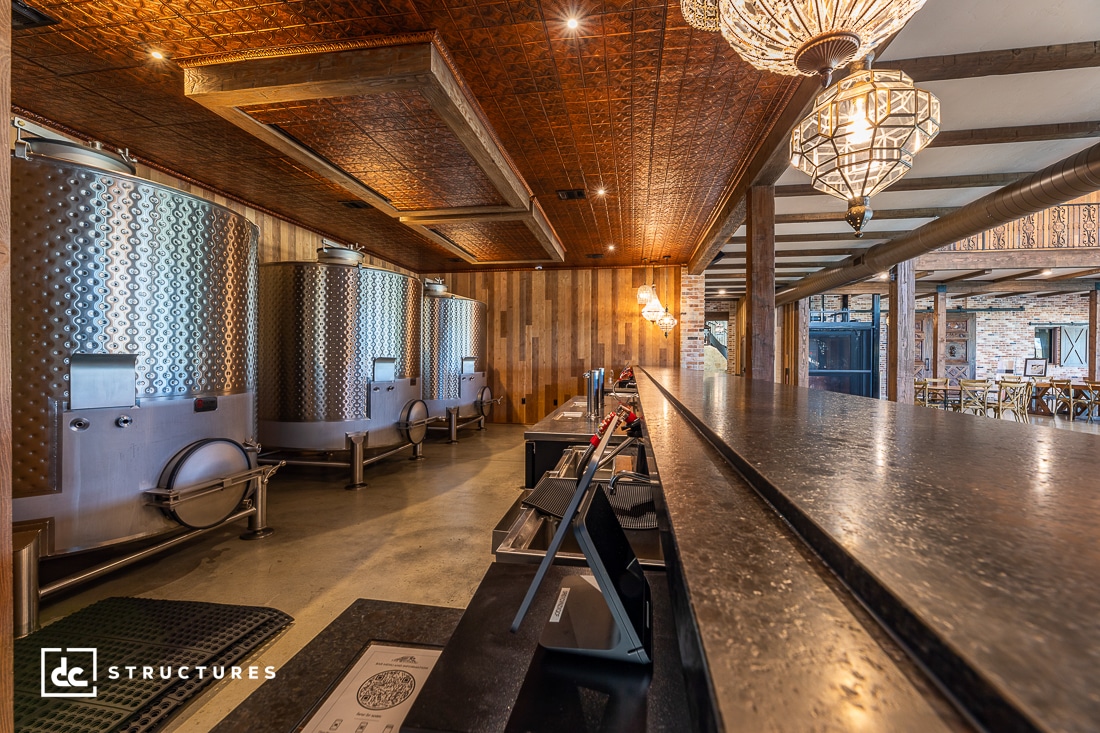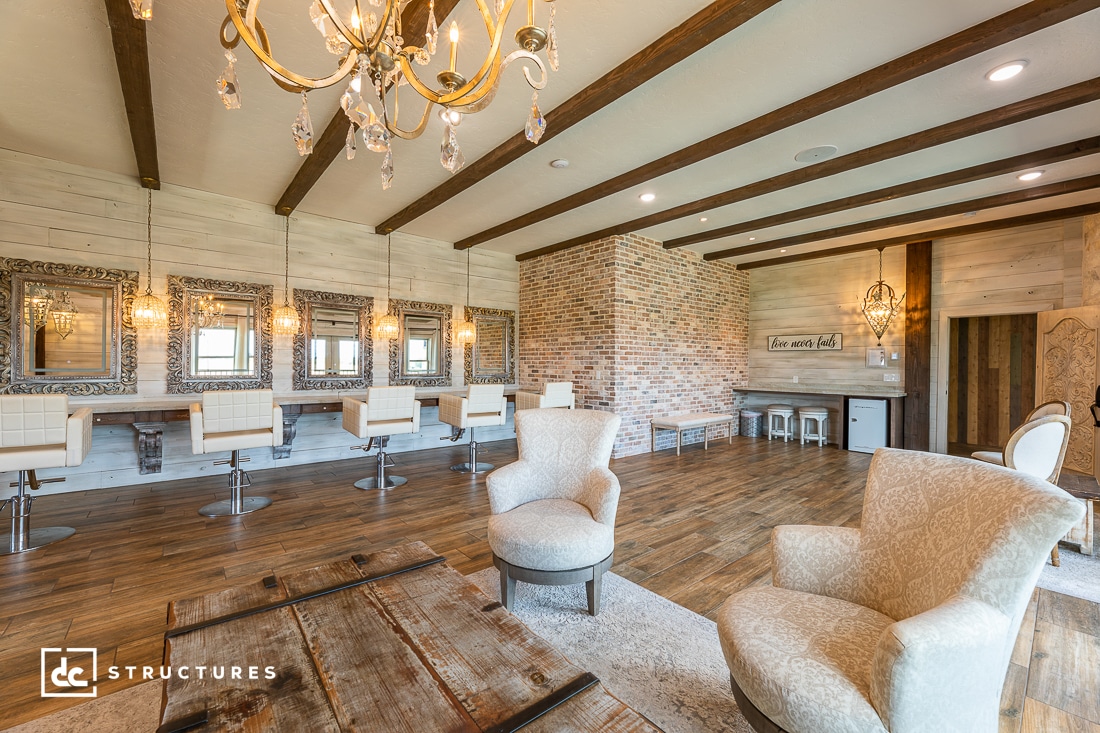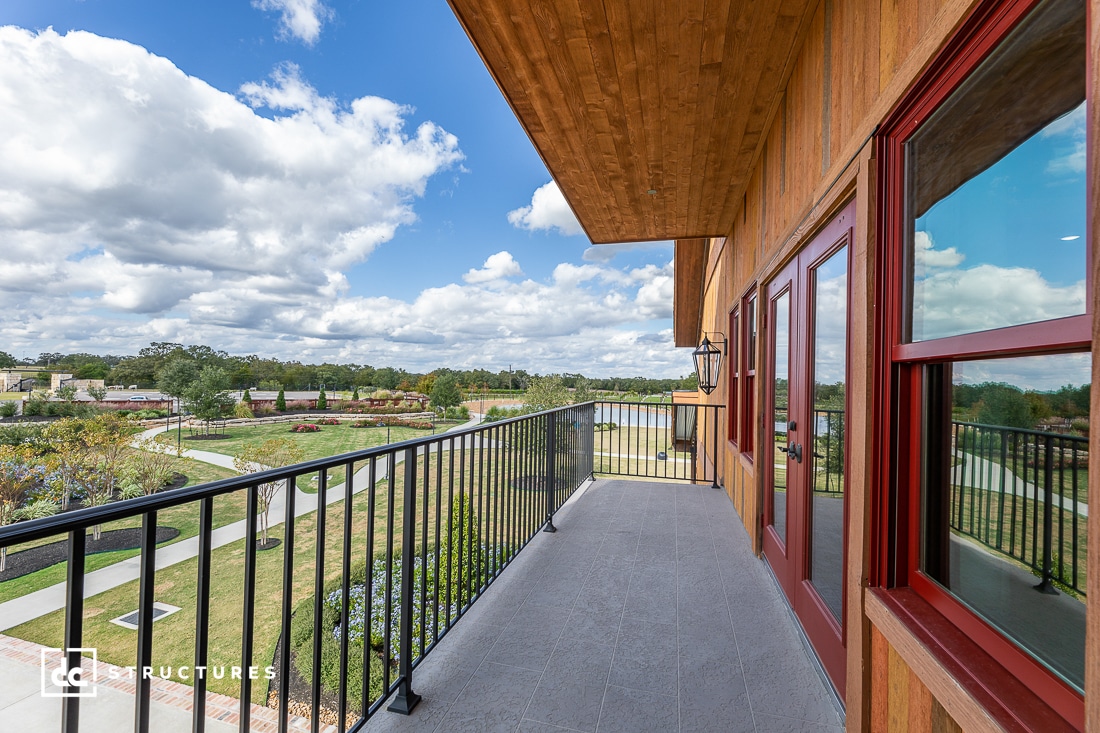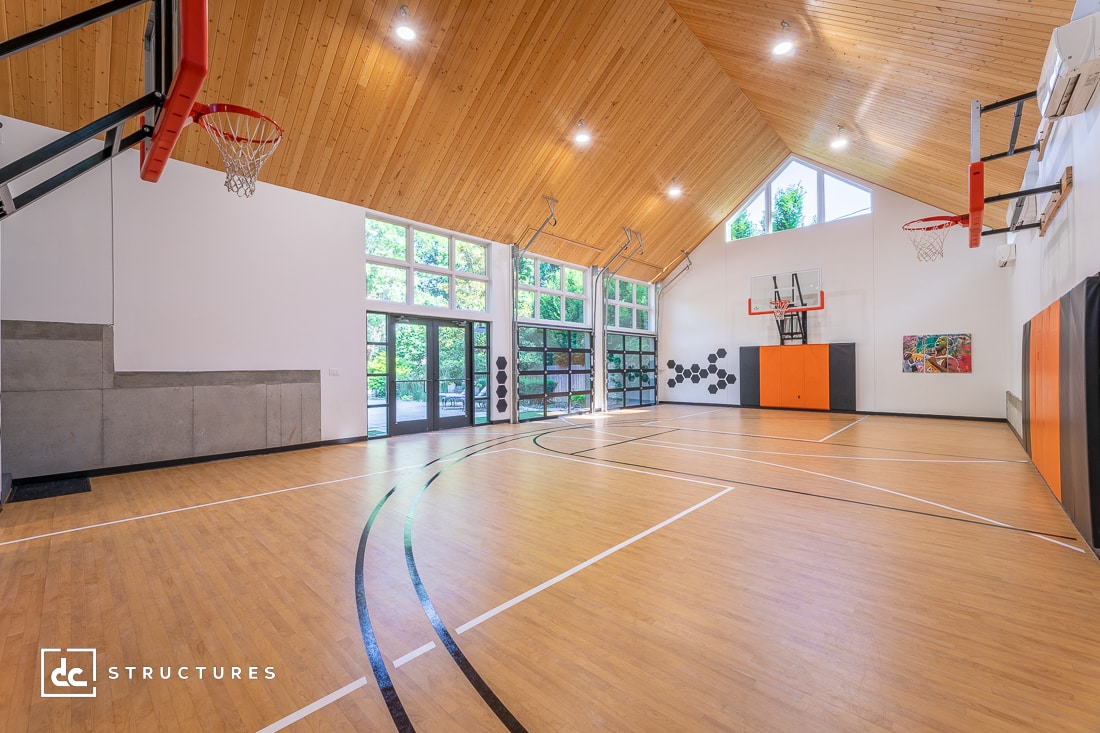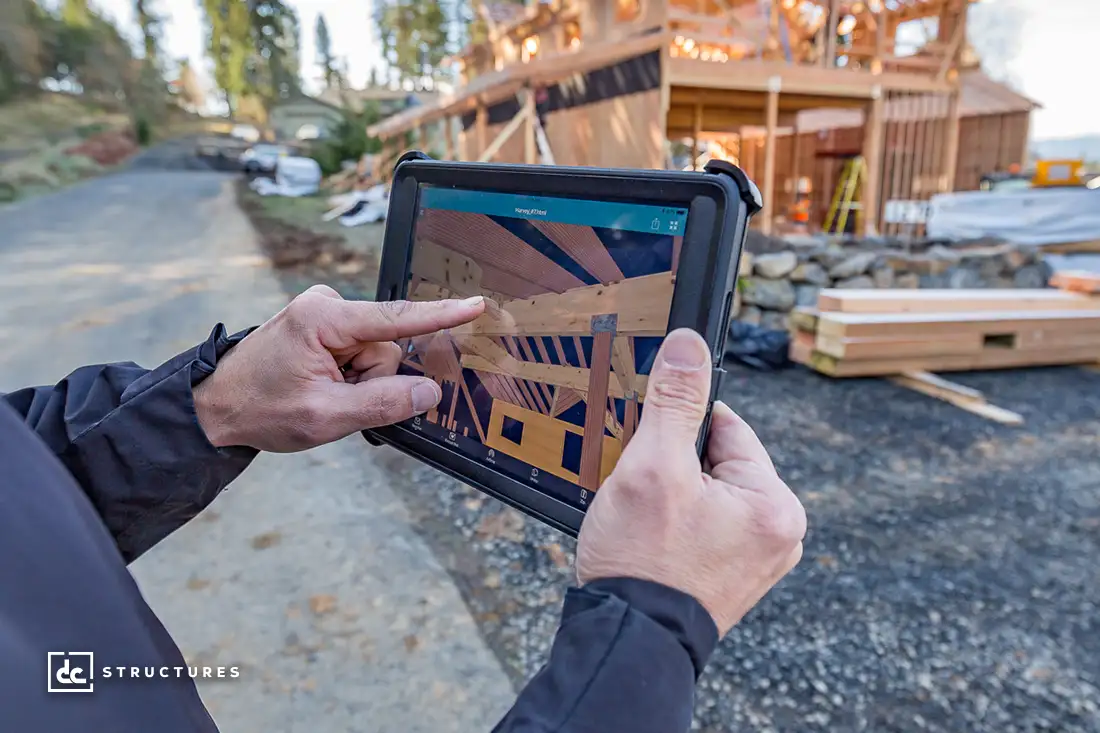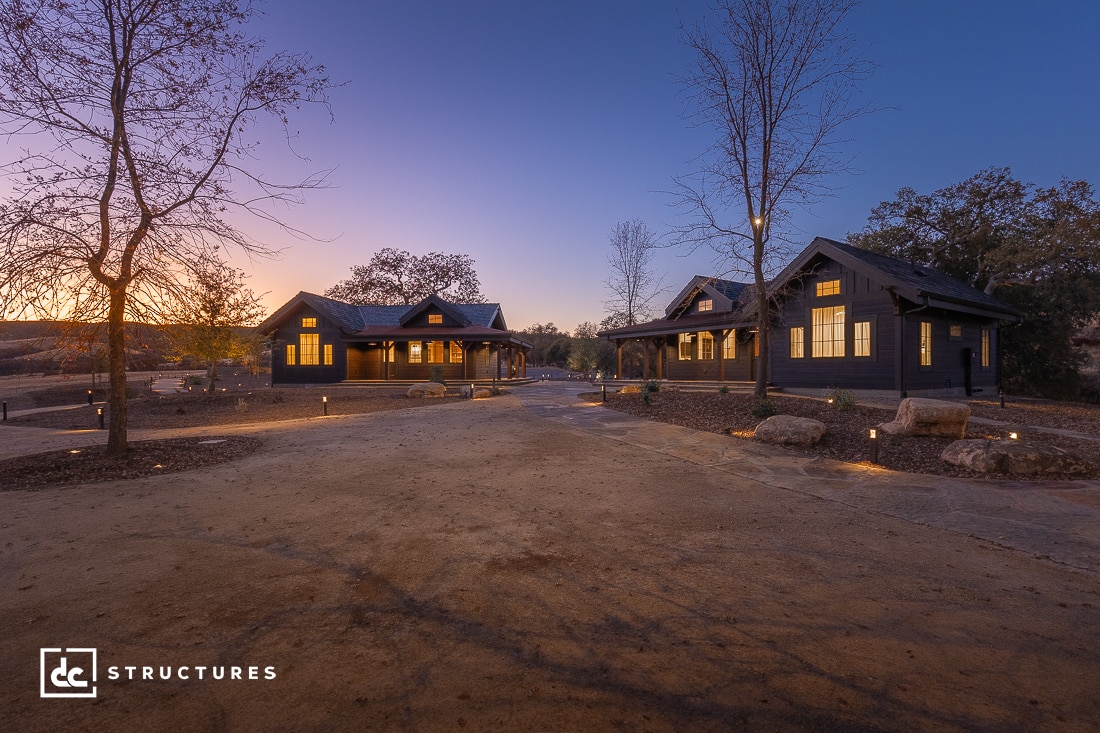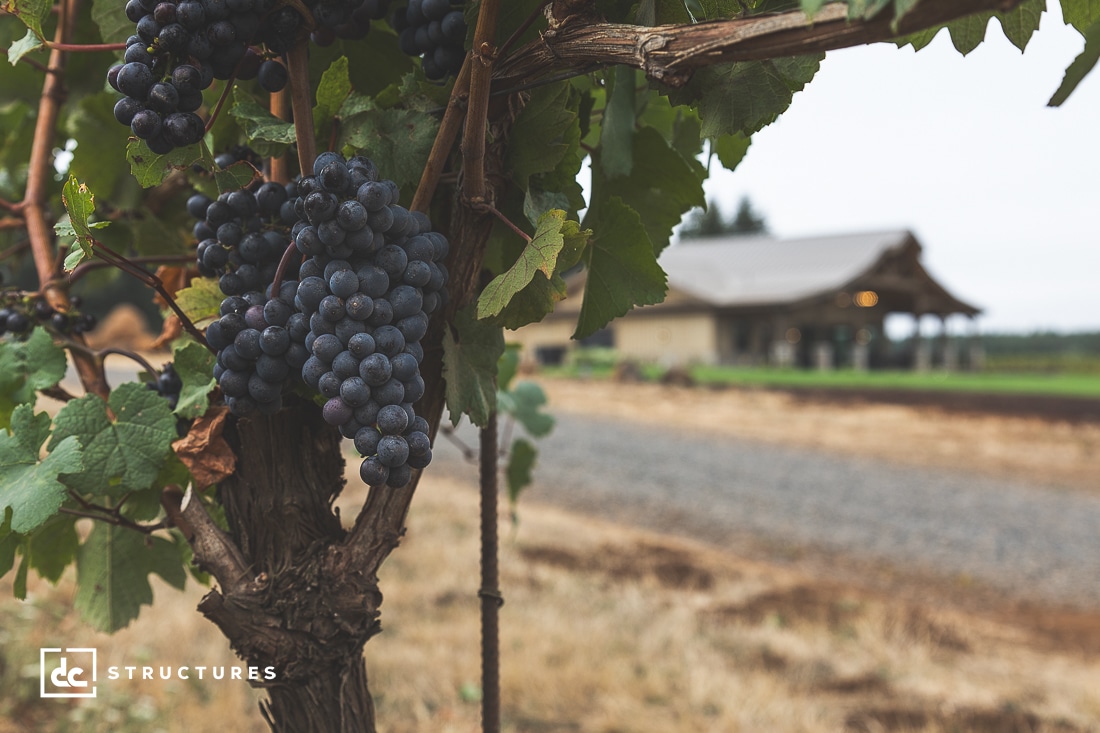Determining the right size for your wedding and event venue may seem like a simple task but it’s a bit more complex than most people realize. While it certainly helps to use other venues as a frame of reference for your design, it’s not always the most effective or accurate method for calculating your total square footage. In this blog post, we’ll break down the many factors that influence your venue size, including the location of your project and what services you plan to offer, as well as what you’ll want to consider in the space planning phase of your design. If you’re ready to start designing your dream wedding and event venue, here’s what you’ll need to know to estimate the right size for your commercial project.
The items listed here are designed to provide a general overview of how you can calculate your venue size and are by no means considered a comprehensive guide to space planning. The averages below are based on past venue projects featured in the DC Structures gallery.
Average Square Footage Calculations
Main Hall | Average: 4,790 sq. ft.
Prep Kitchen | Average: 416 sq. ft.
Restrooms | Average: 430 sq. ft.
Storage | Average: 392 sq. ft.
Mechanical Room | Average: 209 sq. ft.
Bar | Average: 199 sq. ft.
Dance Floor | Average: 400 sq. ft.
Bridal Suite | Average: 463 sq. ft.
Groom’s Suite | Average: 406 sq. ft.
Balcony | Average: 337 sq. ft.
The Basics
Main Hall
According to the International Building Code, 15 sq. ft. is calculated for an occupancy space with tables and chairs that are not bolted to the ground. This means that for an event space with a maximum guest capacity of 350 people, you’re looking at a minimum 5,250 sq. ft. ceremony and reception area by code. Something worth mentioning is that this gives the “code” occupancy and not the true occupancy of your wedding venue. Most venues will include six-person or eight-person round tables, or even 12-person tables, as part of their seating plan. Because of this, the size of an event space will oftentimes be much larger than the minimum provided by code, especially when you factor in walk-ins and the optional dance floor. To help you visualize your seating options and how they might affect your venue size, our design team can create sample seating layouts based on your desired occupancy.
Prep Kitchen
As mentioned earlier, the services you plan to provide will play a significant role in calculating the ideal size for your event venue design; and the choice between a prep kitchen or commercial kitchen serves as a prime example of this. The difference between a prep kitchen and a commercial kitchen is that a prep kitchen is designed to be a space where caterers can come in and warm their food whereas a commercial kitchen allows you to prepare your food on-site. Because no actual food production is happening inside a prep kitchen, the kitchen space will only need to include a warming oven or a stove range, along with a residential grade refrigerator and other necessities (not including a pantry or commercial freezer). In most venues, a prep kitchen is likely to be anywhere from 400 sq. ft. to 600 sq. ft., but this can fluctuate based on your needs.
Commercial Kitchen
With a commercial kitchen, clients are looking at an 800 sq. ft. to 1,200 sq. ft. space on average. This would generally include dry storage, a commercial freezer, a dishwashing area, a prep area, and all necessary commercial ranges and production equipment for on-site food preparation.
Prep Kitchen vs. Commercial Kitchen
Code-wise, the decision between a prep kitchen and a commercial kitchen makes a huge difference because it influences the assembly type of your building. Our commercial buildings typically fall under two assembly group classifications – A-2 or A-3. An A-2 building is a commercial structure intended for food/drink consumption (think restaurants, nightclubs, and casinos) whereas the focus of an A-3 building is less so on food consumption as it is on worship, recreation, or amusement (think gyms, art galleries, and churches).
While a prep kitchen can be found in either building type, a commercial kitchen will only ever be found in an A-2 building since this building type is specifically intended for on-site food production. In terms of sizing your venue, this makes a difference because clients are required to provide more toilets in an A-2 building than they otherwise would in an A-3 building. The idea behind this requirement is that people will be consuming food or drink for an extended period in an A-2 space, and therefore more toilets will be needed to accommodate their needs.
Restrooms
The restrooms included in your event venue will always be sized proportionately to building occupants. However, the required number of toilets based on total occupancy can vary drastically by jurisdiction so it’s important to understand the specific plumbing codes for your area before making your calculations. To give you an idea of the average ADA restroom size, the minimum size for men’s and women’s restrooms in an event venue is 400 sq. ft. altogether. For example, a small venue with a maximum occupancy of 150 people might meet this minimum. However, if you’re designing a catered event space with a maximum occupancy of 350 people, this number could substantially increase.
Storage
Every wedding and event venue needs a sizable storage area for tables, chairs, and miscellaneous items. While most of our clients choose to store chairs and tables inside the main building, some prefer having a separate structure dedicated to storage. Operationally speaking, it’s generally easier to store tables and chairs inside your event space so you don’t have to do as much heavy lifting. However, if you plan to offer both indoor and outdoor event spaces, it might help to have a detached storage space where you can store your outdoor chair and table sets. Though the proportions for your storage space will depend on your needs for the room, the average size of a storage room in our venue designs is about 400 sq. ft. (not including the mechanical room). Our clients will also need to factor in a janitor’s closet as part of their calculations, but these spaces typically average somewhere between 15 sq. ft. and 20 sq. ft. and are sometimes added to a prep or commercial kitchen space.
Mechanical Room
A mechanical room is an area inside your commercial building that houses your mechanical equipment. This space may include your fire riser and other necessary equipment to keep your building protected and functioning properly. The average size of our mechanical rooms is typically anywhere between 80 sq. ft. and 100 sq. ft. if it’s not also serving as a storage space. This room will typically be positioned on the exterior wall so fire departments can easily access your mechanical equipment in the case of an emergency.
Corridors & Hallways
Circulation is a major consideration in any structure, but it’s especially important in a commercial event space. If you’re starting with a custom design for your venue, you’ll want to multiply your total square footage by 1.05% to calculate the appropriate circulation factor for your project. For instance, if you’re designing a venue that’s roughly 4,500 sq. ft. in total conditioned space, your hallways and circulation paths would add about 225 sq. ft. to your overall square footage.
Optional Add-ons
Bar
Most of our venue designs include a bar area in the main hall, but the size and layout generally vary by venue. In terms of size, the bars we design for clients typically fall between 120 sq. ft. and 150 sq. ft. However, in an event space like The Weinberg at Wixon in Bryan, Texas, the bar area is about 340 sq. ft. to accommodate the sheer volume of people inside the main hall. If you plan on designing a larger venue, we recommend adding a bar area that can accommodate two bartenders for maximum functionality. This type of bar will typically have about 10’ length in one direction and about 4’ of workable room behind the bar top.
Dance Floor
Dancing is a significant part of any wedding celebration. Whether you plan to host intimate gatherings or larger parties, consider adding an optional dance floor to your venue design. Our dance floors are usually about 400 sq. ft. in size. However, this number will vary by venue.
Bridal Suite
Another optional add-on for clients is the inclusion of a bridal suite as part of your venue design. Our bridal suites tend to be pretty spacious, ranging from 400 sq. ft. to 600 sq. ft. on average. We typically add a bridal suite to an upper level or mezzanine, with many including a private bathroom, vanity area, and balcony. A few clients have also created detached bridal suites for their wedding venues, with some featuring kitchenettes and private patio spaces. That said, you can design your bridal suite with or without these added features.
Groom’s Suite
Like our bridal suites, our groom’s suites are fairly large to accommodate the needs of the groom and his groomsmen. However, these suites tend to be smaller than the bridal quarters, with most running from 350 sq. ft to 550 sq. ft. on average. These suites can also include a private bathroom, balcony, kitchenette, or entertainment area inside the space.
Balcony
Many clients of ours choose to add a balcony or deck to their wedding and event venue designs. While some clients choose to add balconies outside the bride’s and groom’s suites, others elect to include them above the entrance for visual appeal and function. Your outdoor area can be as small or large as you want for your venue, with our deck and balcony designs averaging between 200 sq. ft. and 600 sq. ft. We offer several options for your structure, including our cantilevered deck and heavy timber deck upgrades.
Office & Conference Room
If you plan on running a full-time event business out of your venue, you might consider adding a workspace and conference room to your design. These can exist inside your event space or as a separate unit apart from the main building. Typically, the office areas in our commercial event spaces are about 100 sq. ft. Our conference rooms tend to be 100 sq. ft. to 150 sq. ft.
Coat Closet
Coat closets are certainly not a must-have, but they do serve a valuable purpose in our wedding and event venue designs. If you plan to include a coat closet in your event space, you’ll want to add about 50 sq. ft. to 75 sq. ft. to your total square footage. However, this number can fluctuate depending on your needs and venue size.
Final Considerations for Your Venue
While designing your venue with our team, consider what kind of environment you want to offer clients and how space planning will play a role in achieving your vision. For instance, if you plan to build an all-inclusive event space suited to larger parties, you might consider adding a commercial kitchen to your venue so you can offer both prep and commercial kitchen capabilities for prospective clients. You might also consider adding private bathrooms, balconies, and luxurious vanity areas to your bride’s and groom’s suites to accommodate a range of needs. As always, our team is here to help guide you through the process and assist with any questions or concerns you may have regarding space planning.
For more information on our venue designs, feel free to give us a call at (888) 975-2057 or request a digital catalog!
